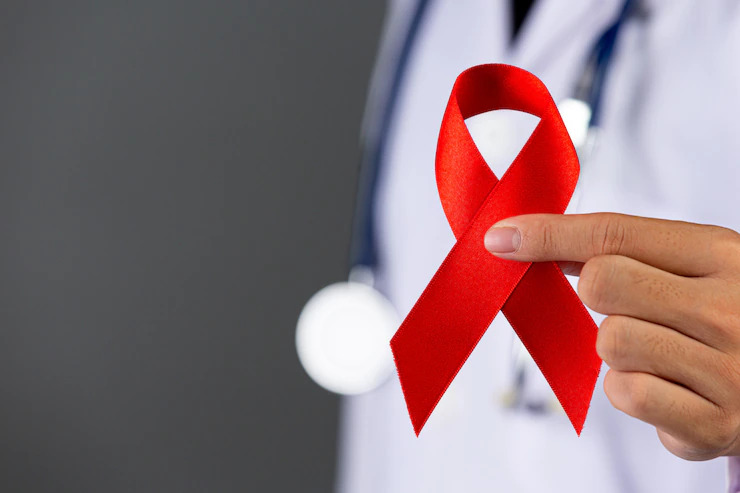Preventive Healthcare
HIV Test: Types, Procedure, Timing and Results
32108 Views
0

Human immunodeficiency Virus (HIV) is one of the world’s most significant health challenges. HIV leads to AIDS (acquired immunodeficiency syndrome), which is the persistent and gradual decline of the immune system and thereafter its failure. The prevalence of HIV among adults globally was 0.7% in 2021 (people between the ages of 15-49). The number of people living with HIV in the same year was 38.4 million. Although the capacity for HIV tests has increased, there are about one in six people (15%) with the condition, who are still unaware of their status.
What is HIV Test?
HIV test or screening is the sole way of determining whether you are infected by the virus. The test analyses blood or any other body fluid to ascertain infection. It is to be noted that HIV cannot be spotted right away as the tests are feasible only when the virus grows inside the host or the bodies start making antibodies against the same. However, it is imperative to undertake a test as finding the virus quickly means an early start toward treatment. As the transmission of the virus takes place through the exchange of body fluid, an early HIV test allows the host to not pass the virus to other people.
Types of HIV Tests and Their Timings
Different types of HIV tests and their timings:
Standard HIV Blood Test
The HIV blood test is also conducted to examine the antibodies against the virus present in the host. The tests are more accurate in the case of 23 to 90 days from the initial infection.
Antigen/Antibody test
This HIV test examines both antigens and antibodies for the determination of infection. Antigens are substances that are new to the host body and act in a manner to activate the immune system. The antigen that is analyzed in the HIV test is p24 and can be positively identified in the blood of the patient within 18 to 45 days after exposure. There is also a fourth-generation HIV test called the combination test. This test is capable of identifying infection due to HIV with an accuracy of 99% within 13 to 42 days of exposure.
Nucleic Acid Tests (NAT)
This HIV blood test is also known as the HIV RNA or the viral load test. The test scans the blood of an individual for the virus. It does not scan for antibodies. The test is accurate and the timeline is also from 10 to 33 days. The test in HIV patients helps analyze how a patient is responding to treatment.
Procedure of HIV Blood Tests
Standard HIV Blood Test
This HIV blood test is conducted at the labs. Here, the technician will draw some blood from your vein. The blood is then sent to the lab for the determination of infection. The blood from the vein allows better detection of infection as compared to rapid testing through a finger prick or any other bodily fluid.
Antigen/Antibody Test
The test is conducted using a similar method as the standard HIV blood test. The blood is drawn from the veins of the person taking the test. The combination test is now the standard for HIV blood tests in most labs, such as metropolis.
Nucleic Acid Tests (NAT)
This HIV test is conducted using blood drawn from your vein. The labs then isolate the copies of HIV-2 RNA from the plasma sample to provide a quick and accurate result.
Understanding HIV Test Results
Positive Test Results
If your HIV test result is positive, then HIV traces are present in your body. Doctors never consider a single test to diagnose HIV. If you have taken a rapid test, you must be asked to get a standard lab test done. If you have already undergone a lab test, further detailed blood tests like the Antibody differentiation test between HIV-1 and HIV-2 and Western blot (or indirect immunofluorescence assay) will be conducted to confirm the diagnosis.
While a positive HIV test result doesn’t denote you have AIDS, you can start treatment to keep AIDS at bay. With antiretroviral therapy (ART) medications and other drugs, HIV can be brought down.
False-Positive Test Results
At times the tests detect certain substances and antibodies of another infection, and there are chances that it gives you a false-positive result. Also, there are rare chances that the labs misinterpret or mix up your test and provide a positive report! Moreover, the rapid oral fluid test can give a false-positive result. You can, therefore, take HIV blood tests to confirm the report and diagnosis.
Negative Test Results
If your HIV test comes negative, you must start to take preventive measures for HIV. To start with practising safe sex, take pre-exposure prophylaxis (PrEP) medicine after consulting with your doctor and getting your partner tested for HIV.
But, note that it can take 6 months to develop enough antibodies for some tests to show a clear positive or negative diagnosis. If you think you have been exposed to an infection and have undertaken tests before 6 months, consider taking a test after 6 months to confirm the reports.
False-Negative Test Results
As mentioned in the previous point, if you conduct an HIV test before your body develops enough antibodies, your result can be a ‘false-negative’. It means that you have HIV but it doesn’t reflect on the report. False-negative diagnosis can happen in patients undergoing antiretroviral medications for PrEP.
Conclusion
If you are doubtful of being exposed to HIV in the last three days (72 hours) talk to your doctor right away. You can also get in touch with our health experts and Metropolis and conduct HIV tests. Our HIV test price varies from city to city and the price depends on the test undertaken.













1701259759.webp)









 WhatsApp
WhatsApp